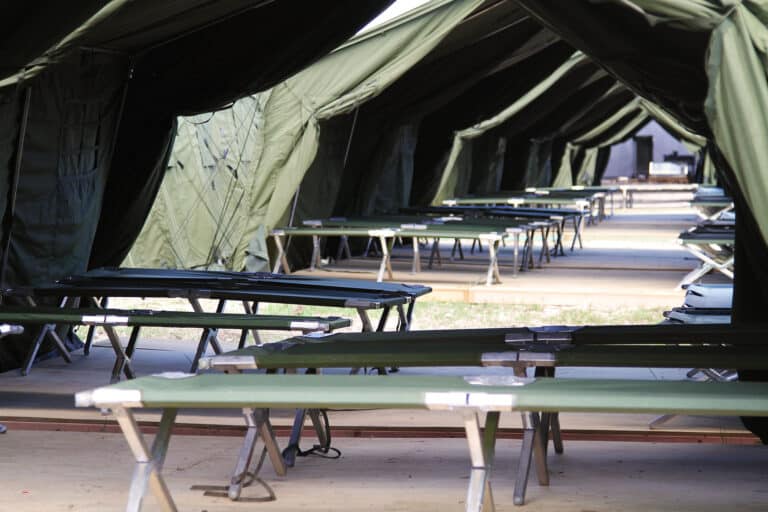The Tampa Affair, Children Overboard & Australia’s Hardline Asylum Seeker Policy
Twenty years ago, in August 2001, a fishing vessel in distress became a catalyst for Australia’s offshore processing regime and hardline border protection measures.
The Tampa Affair
On August 24, 2001, a Norwegian cargo ship, the MV Tampa, was en route from Fremantle to Singapore. It answered a call from the Australian Coast Guard to rescue the crew and passengers of a flailing fishing vessel. That Indonesian fishing vessel, the Palapa, had 438 mainly Afghan Hazara asylum seekers aboard, including pregnant women and children. These asylum seekers were fleeing Afghanistan and persecution from a resurgent Taliban.
After the Tampa rescued those on board, the Captain received a request to return the asylum seekers to Indonesia. The asylum seekers begged the captain of the Tampa to instead take them to Christmas Island, an Australian territory that was only 4-5 hours away, rather than returning them to Indonesia, which was 11 hours away. When the asylum seekers on board the fishing vessel left Indonesia, the Australian government’s policy was to rescue asylum seekers at sea, detain them in Australia, and process their claims for asylum. If they were successful they would receive permanent protection visas and be released into the community.
In the years leading up to the Tampa rescue, there had been increasing numbers of asylum seekers attempting to reach safety in Australia by boat. A large number of the boat arrivals during this period were from Iraq and Afghanistan, and many Australians expressed anxiety about demographic change and fears of “invasion”. The Australian government now responded to the Tampa in the context of increased public concerns about boat arrivals. If the asylum seekers onboard the Tampa reached Christmas Island, an Australian territory, they might have access to protection visas and a judicial review of their claims.
The Australian Prime Minister John Howard took a hard line and refused to give the Tampa permission to enter Australian waters. The Tampa’s Captain, Captain Rinnan, seeing the desperate medical situation of many on board and worried that some asylum seekers might die, defied the order. He declared a state of emergency and entered Australian waters without permission. In response, the Australian government sent troops to board the vessel and take control of the ship, preventing it from reaching Christmas Island.

Implementation of the “Pacific Solution”
Within days of the Tampa incident, the Australian government passed the so-called “Pacific Solution” in response. It consisted of three strategies: (1) offshore territories such as Christmas Island would be “excised” from Australia’s migration zone so that asylum seekers could not claim protection once they arrived; (2) the Australian Defence Force was authorized to intercept asylum seeker vessels; and (3) asylum seekers would be forcibly removed to detention centres on either Nauru or Manus, Papua New Guinea.
At the same time, Australia signed a Memorandum of Understanding (MOU) with both PNG and Nauru allowing for people to be housed on the islands and for their claims to be processed.
The “Children Overboard” Affair
Just five weeks after the Tampa incident, another wooden fishing boat with over 200 asylum seekers on board ran into trouble off of Christmas Island. The vessel, designated SIEV 4 (Suspected Irregular Entry Vessel), was intercepted by an Australian navy ship just before it sank. Following the rescue, prominent members of the Australian government, including the Immigration Minister, Defense Minister and even Prime Minister John Howard, charged that passengers of SIEV 4 had threatened to throw their children overboard. The Prime Minister accused the asylum seekers of sinking the boat themselves, and the government released photos of children in the water as supposed proof that children were being tossed into the sea to drown.
A Senate select committee inquiry found that indeed no children were thrown overboard from SIEV 4, and that the photos purportedly showing children thrown into the sea were taken after SIEV 4 sank.
An election and a legacy
Just one month following the Children Overboard affair and two months after the Tampa incident, John Howard was re-elected to office as Prime Minister. This was largely attributed to his hard-line stance on the Tampa and fears over immigration post-9/11.
Since this time, not only the conservative political party, but both major Australian parties, have fully bought into the idea that boat turn-backs, offshore processing and tough border policies are necessary for Australian “safety”.
Contemporaneous new report on the Tampa Affair, ABC Lateline 2001




